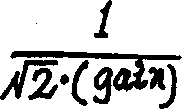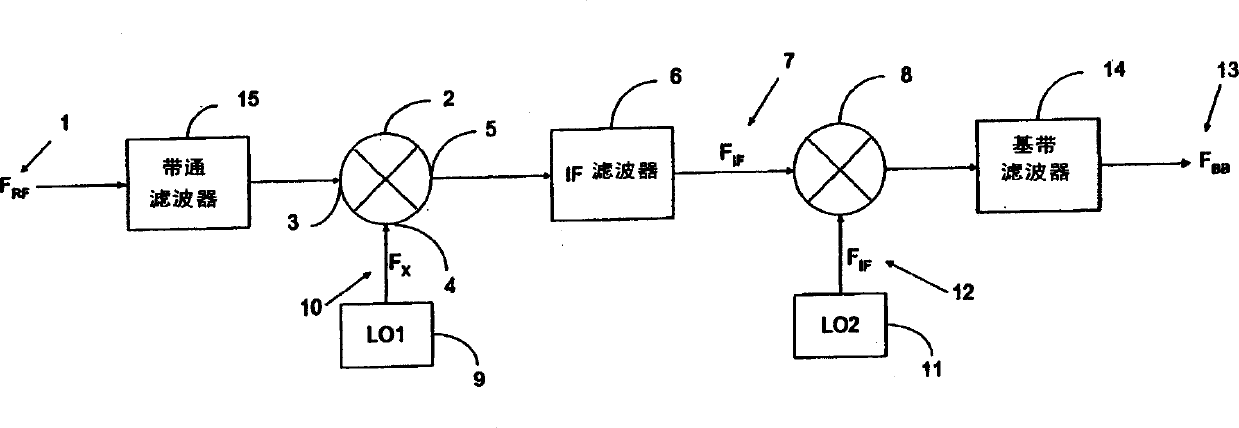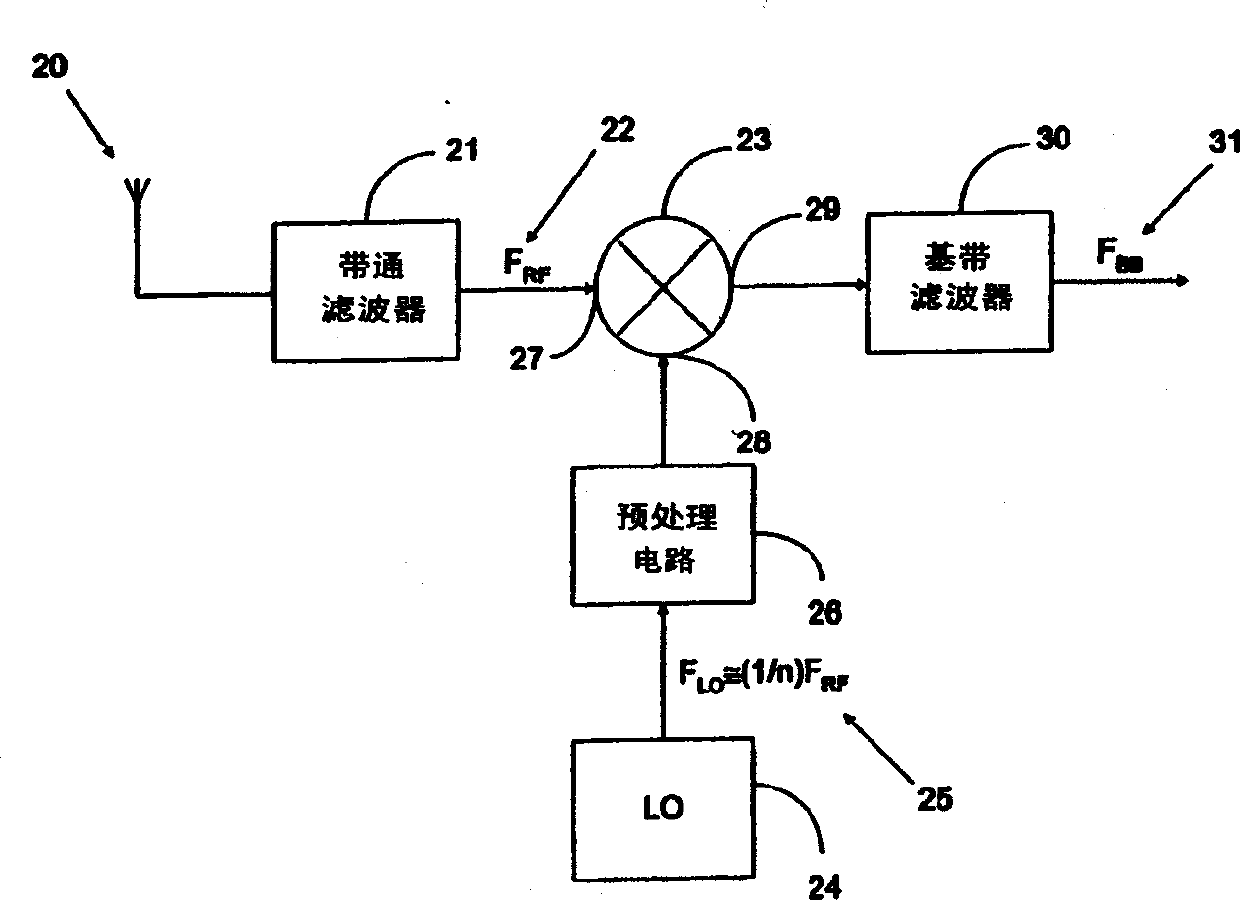Direct conversion receiver employing subharmonic frequency translator architecture and related preprocessor
A technology of frequency converter and receiver, applied in the direction of modulation conversion balance device, modulation transfer, electrical components, etc., which can solve the problems of increasing transistor shot noise, resistance drop, and unacceptable mixer
- Summary
- Abstract
- Description
- Claims
- Application Information
AI Technical Summary
Problems solved by technology
Method used
Image
Examples
Embodiment Construction
[0093] Detailed description of the preferred embodiment
[0094] 1. Direct Conversion Receiver
[0095] A direct conversion receiver according to the invention is shown in FIG. 2 . Antenna 20 receives a signal comprising an RF carrier signal modulated by a baseband signal which is passed through a bandpass filter 21 configured to substantially attenuate signals outside the band of interest, assuming the received signal is within the range of filter 21. In-band, it passes filter 21 substantially unattenuated. The signal received by the filter 21 is identified by a numeral 22, and the signal is provided as an input to a frequency converter 23 through an input port 27, and the carrier frequency of the signal is F RF , an amplifier or a low noise amplifier (LNA) may be provided between the bandpass filter 21 and the signal input port 27 of the frequency converter. In one embodiment, frequency converter 23 is a mixer, in another embodiment it is a multiplier.
[0096] A local o...
PUM
 Login to View More
Login to View More Abstract
Description
Claims
Application Information
 Login to View More
Login to View More - R&D Engineer
- R&D Manager
- IP Professional
- Industry Leading Data Capabilities
- Powerful AI technology
- Patent DNA Extraction
Browse by: Latest US Patents, China's latest patents, Technical Efficacy Thesaurus, Application Domain, Technology Topic, Popular Technical Reports.
© 2024 PatSnap. All rights reserved.Legal|Privacy policy|Modern Slavery Act Transparency Statement|Sitemap|About US| Contact US: help@patsnap.com










